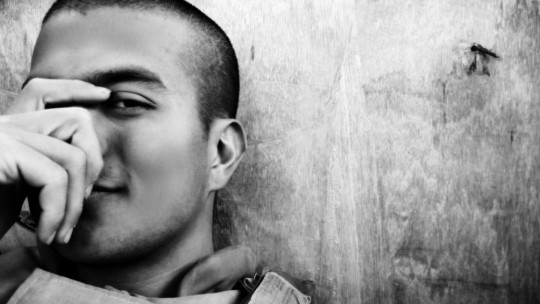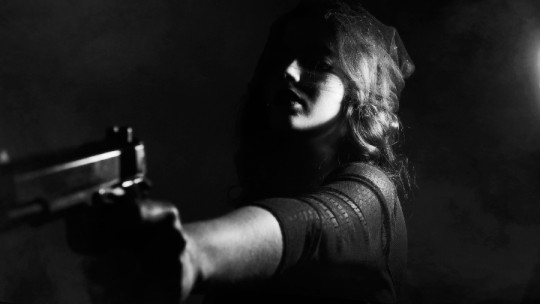
Triscaidekaphobia is the phobia of the number thirteen; The subject who suffers from it feels such intense and irrational fear of this number that he avoids it at all costs.
In this article we will talk about triscaidekaphobia and we will see how this phobia is defined, what its relationship is with superstition and what examples are linked to it.
What is triskaidekaphobia?
Triskaidekaphobia or phobia of the number thirteen is an intense and irrational fear of the number 13 If we look at the etymology of the term “treis” it is translated as three and “deca” ten, and “triscaideca” can be translated as thirteen. To consider fear as a phobia we must verify that it is excessive, that it generates discomfort or alteration of the subject’s functionality, that is, it has an impact on the subject’s life.
To see the scope of the negative evaluation of the number thirteen, it is worth noting that 10% of the general population reports preferring not to be associated with this number, despite the percentage of subjects who can receive the diagnosis of phobia being lower.
Symptoms
The Fifth Edition of the Diagnostic Manual of the American Psychiatric Association (DMS 5) classifies phobias within the category of anxiety disorder. Specific phobias are defined as an intense fear or anxiety about a specific object or situation, this fear being almost always observed disproportionately and resulting in avoidance of the phobic stimulus. As with most anxiety disorders, symptoms must be present for at least 6 months.

Triskaidekaphobia is classified as a type of specific phobia because it does not match any of the specific specifiers. Given the impact that phobic symptoms have on the person’s life it will be necessary to go to psychotherapy.
We must keep in mind that to meet criteria and, therefore, be able to make a diagnosis and consider it a phobia, discomfort or deterioration in quality of life must be observed; Therefore, intervention will be essential to recover functionality.
Avoidance of the number thirteen
We also see how The use of the number 13 is avoided in different places or professions. Some skyscrapers do not have the thirteenth floor, they go directly to the fourteenth. This avoidance is also observed in streets, house numbers, airplane lines, jumping directly from twelve to fourteen or even hotel room numbers.
The national identity document, the DNI, does not include the number thirteen either. The famous writer John Ronald Reuel Tolkien, in his book The Hobbit, tells how the dwarves ask to find one more to join them on the trip to avoid being thirteen. Likewise, singers and composers have avoided using the number thirteen to number their songs.
We also see this avoidance in sports such as motor racing or motorcycling, where participants refuse to wear number thirteen. This relationship between thirteen and bad luck in superstitious beliefs is also reinforced when, instead of avoiding this number, it is used, since It is done with the purpose of disassociating it with the bad luck that has been attributed to it at a social level.
Triscaidekaphobia and superstition
Triscaidekaphobia has been linked to superstitions. We understand superstition as an irrational belief, contrary to reason, that we could explain as magical thinking without a scientific basis, that is, we cannot objectively prove it. Although these types of beliefs may seem harmless, it is possible that they affect the subject and end up having an impact on their daily life if they are unable to carry out certain activities due to said superstitions.
These superstitions have their origin in cultural or social learning, which means that they do not appear innately in the subject, they learn it through cultural influence from their environment. This belief of appearance makes sense, since we realize that different superstitions arise in different cultures and subjects from the same culture can show similar superstitions.
From the field of Psychology, attempts have been made to explain the appearance of superstitious behaviors. The psychologist Frederick Skinner observed in an experiment carried out with pigeons that when reinforcement was presented randomly, the animals associated it with a behavior performed prior to its appearance, thus repeating it to obtain reinforcement. These behaviors were described as superstitious.
Later, psychologist Michael Mahoney noted that the superstitious behaviors were not those carried out before, but after receiving the reinforcement valued as prejudices, cognitive distortions of perception and assessment of reality.
In this way, we could consider triscaidekaphobia as a superstition, an irrational belief without scientific basis. Subjects perform specific behaviors to try to avoid or neutralize the effects produced by the number thirteen.
Treatment
The technique that has shown the best results and greatest effectiveness to treat specific phobias is live exposure, which consists of directly exposing the subject to the phobic stimulus. Regarding triscaidekaphobia we will expose the patient to the number thirteen.
The exposure mode may vary depending on the intensity and duration of the exposure. We will try to expose at the maximum intensity that the subject can withstand and gradually increase it. The duration should be long enough so that anxiety can decrease.
Examples of triskaidekaphobia
As we have already seen, triskaidekaphobia is the intense fear of the prime number thirteen. Thirteen has been related to different facts or events, currently being a number linked to bad luck that many try to avoid for fear that a catastrophic event may occur. This relationship with negative events is perceived in different cultures and at different historical moments. Let’s see what examples and references of rejection or fear of the number thirteen exist.
We will divide them into different categories depending on whether they are linked to death, religion, historical events or avoidance behavior.
1. Linked with death
The number thirteen has been linked to death. Egyptian culture considered life as a cycle divided into different phases, phase thirteen coinciding with death. On the other hand, in the deck of tarot cards, used to predict the future, card number thirteen coincides with death. In both cases, death is not understood as something negative, since the Egyptians believed that after death a better life began and the death card of the tarot expresses that the subject will experience a change, a transformation, which may be positive.
2. Related to religion
Another field that has linked thirteen with bad luck or described it as a number to avoid is religion. The Christian religion refers to the fact that at the Last Supper there were thirteen people, the twelve apostles and Jesus, this event happening shortly before Jesus was betrayed and executed. In addition, Chapter 13 of Revelation, the last book of the Bible, the sacred book of Christianity, is dedicated to the Antichrist, As his name indicates, a figure contrary to Christ, to God.
The Vikings believed that Loki, a god from Norse mythology, considered the god of fraud and trickery, was the thirteenth god in the pantheon. In the same way, Christians once again linked thirteen with evil, pointing out that Satan, who is linked to sin, was the thirteenth angel.
3. Historical events
The number thirteen has also been related to historical events that have reinforced the bad luck that this number entails and the connection with negative events.
Friday thirteen
Friday the thirteenth is considered an unlucky day in different Western cultures, since different negative events occurred on this date. This irrational fear of Friday the thirteenth is also considered a type of phobia called parascevedecatriaphobia. Negative events that took place on Friday the thirteenth: one of the most notable events was the capture and conviction of the Knights Templar on Friday, October 13, 1307. More recently, on December 13, 1939 in Victoria, Australia, one of the worst fires in human history took place.
Later, on Friday, October 13, 1972, a Uruguayan Air Force plane crashed. On Friday, November 13, 1992, one of the best-known crimes in Spain took place, that of “the Alcàsser girls.” Twenty years ago, on Friday, January 13, 2012, the Costa Concordia cruise ship hit a rock, killing some of its passengers. One of the most recent events, on Friday, November 13, 2015, the first terrorist attack took place in Paris, France.








